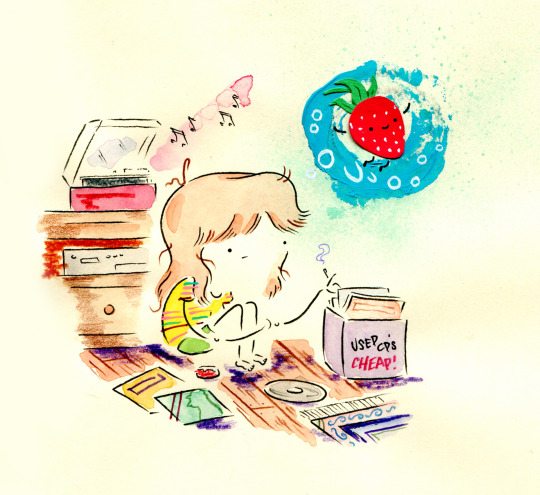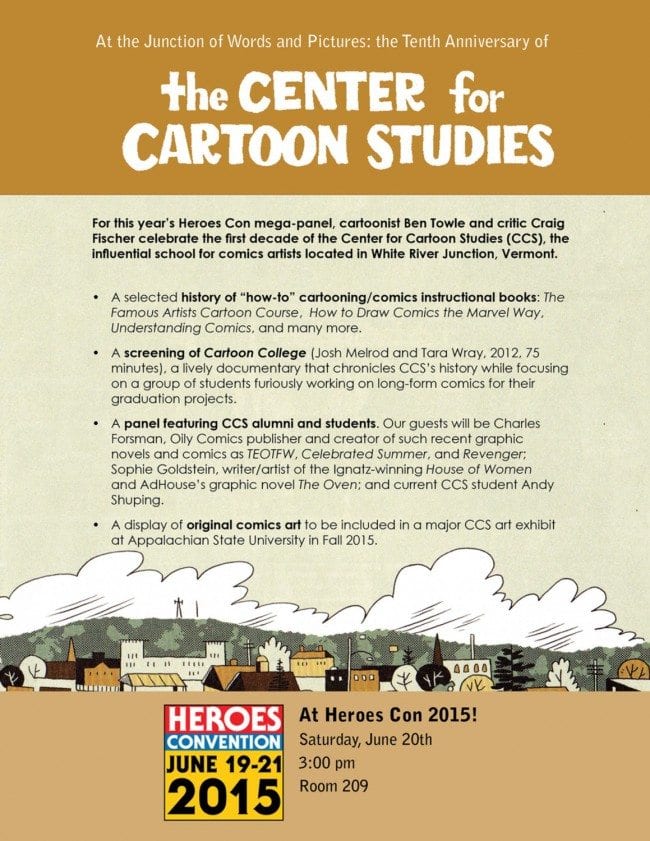Today on the site, R.C. Harvey is back with another installment of Hare Tonic, which is this time both a history lesson and a thesis, that cartoonists can be divided into two camps: figure drawers and storytellers:
Artistic expressiveness of a highly individualistic sort had never been particularly welcomed by traditional comic book publishers. The corporate mind, ever focused on the bottom line of the balance sheet, favored bland "house styles" of rendering and committee-generated stories, neither of which, given the compromise inherent in the process, would be likely to offend potential buyers. But the medium had always attracted creative people, and they had lived and worked within its commercial constraints, sometimes happily, sometimes restively. And as direct sale shops began to prove their viability, the economics of the industry seemed beckoning to more adventurous, more personal, endeavors. Still, the route to individual expression in mainstream publishing was a long and tortuous one; it was, in fact, not one route but several, each a tributary that followed a different course to a seemingly different objective, but some culminated in the 1980s in an artistic renaissance that found its impetus in all of the creative impulses of the diverse endeavors. And the renaissance flowered in the fertile economic garden of the direct sale shops.
For the sake of discussion, let me simplify the progression by positing that there are two traditions in comic book creation— the figure drawing tradition and the storytelling tradition. Neither is wholly exclusive of the concerns of the other, but each pursued its emphasis with slightly different results. Jack Kirby belongs at the beginning of the figure drawing tradition. The artistic preoccupation is rendering the human figure, and the comics were all anatomy and the figure in action. Kirby was not so absorbed in this endeavor that he neglected storytelling; that's one of the things that made him unique.
[...]
I put Will Eisner and Kurtzman at the headwaters of the storytelling tradition. Their preoccupation was less with drawing and more with story, with content. Their drawings were composed to serve the narrative, to time its events for dramatic effect; similarly, panel composition aimed at intensifying the impact of aspects of the story.
We also have the fourth day of Sam Henderson's week creating the Cartoonist's Diary column, in which the fledgling cartooning teacher ponders the perils of showing his students old cartoons.
Meanwhile, elsewhere:
—News. The young cartoonist Atena Farghadani is on trial in Iran, facing a prison sentence for a drawing criticizing restrictions on contraception and birth control:
If found guilty of the crimes she is alleged to have committed, the 28-year-old could face years in prison.
What are those crimes? According to Amnesty International, they include "spreading propaganda against the system" and "insulting members of parliament through paintings." Ultimately, the spark for her legal woes seems to have been relatively simple: a cartoon depicting members of Iran's parliament as animals.
The Committee to Protect Journalists has an interesting interactive map showing various reactions to Charlie Hebdo (including censorship) around the world.
—Reviews & Commentary. The Doug Wright Awards site has posted a transcript of Seth's speech at the Giants of the North Hall of Fame induction speech for Merle "Ting" Tingley:
Sometime in the late 1960s Mr. Tingley came and visited my grade one class in Strathroy, Ontario. I imagine that year we likely had a banker or a doctor come visit as well… And maybe a policeman too… but I don’t remember those other guys. All I remember is the cartoonist.
Illogical Volume writes about Grant Morrison and Frank Quitely's All-Star Superman.
A few thoughts about working for Marvel/DC, as stolen from a Canadian friend who was trying to add a bit of clarity to my rant about Chip Zdarsky’s inability to say the name of Howard the Duck‘s “original creator”:
(1) In corporate comic, everyone is a scab because there is no union.
(2) In corporate comics, no one can be a scab because there is no union.
(3) Join the union.
What to make, then, of Grant Morrison’s dedication to superheroes, his attempts to imbue them with some sort of positivist power of their own, to try and find transcendent meaning in a series of commercially dictated genre tropes and characters that were sacrificed to them? When presented straight, in Supergods, this stuff feels as silly and desperate as it is, like an attempt to put a fresh golden frame around a thrice-stolen turd in the hope of selling it on eBay again. But in All Star Superman? Not so much. The sales pitch here is a lot more successful.
—Interviews & Profiles. Jules Feiffer and Neil Gaiman appeared on a panel together:
Turning his attention to Feiffer, Gaiman said, “I had a copy of The Explainers [an anthology of Feiffer’s weekly comic strip in the Village Voice, which ran from 1956–66] when I was about five. I didn’t understand a word of it,” to which Feiffer quipped: “Many adults can say that, too.”
Blaise Larmee interviews Leon Sadler:
At what point did money become a concern?
When I was priced out of London, left all my friends behind, still working full time at a boring job and there's no way I'll ever repay my debts or be able to raise the money for a deposit on a house.
Oh god. That sucks
[Laughs] I can handle it its been like this for so long.
Where are you living now?
I think when you see money being thrown at just so much shit it makes u think "why can't u make something really good and get paid for it"? I'm living in a cheap town near Nottingham called Loughborough. Hugh Frost (Mould Map editor) lives in Nottingham now so we can see each other more better.






























